We have heard a lot about the waste left by the expeditions to Everest from the base camp to the summit. This is the most visible part and has always had more media coverage, but it is a very small part of the waste problem in the Khumbu valleys.
To talk about waste in Khumbu is to talk about the whole solid waste generated by the inhabitants and all the people who visit this area every year. And it is also to talk about human waste, which becomes a source of pollution that goes directly to glaciers and rivers.
According to the 2011 census, the Khumbu valleys were inhabited by 7,161 people and currently it is estimated that around 8,000 live here.
On the other hand, every year, Khumbu is visited by 65 or 70,000 people among expeditions, treks and other forms of tourism. These figures already give an idea of the extent of waste generated in these valleys, with the aggravation that all these people concentrate virtually in 6 months, spring and autumn, which are the seasons of good weather.
To explain how this environmental problem is faced, I would like to speak of two initiatives: the Sagarmatha Pollution Control Committee which dates to 1991 and, one of the most recent, the Sagarmatha Next that was launched a couple of years ago.
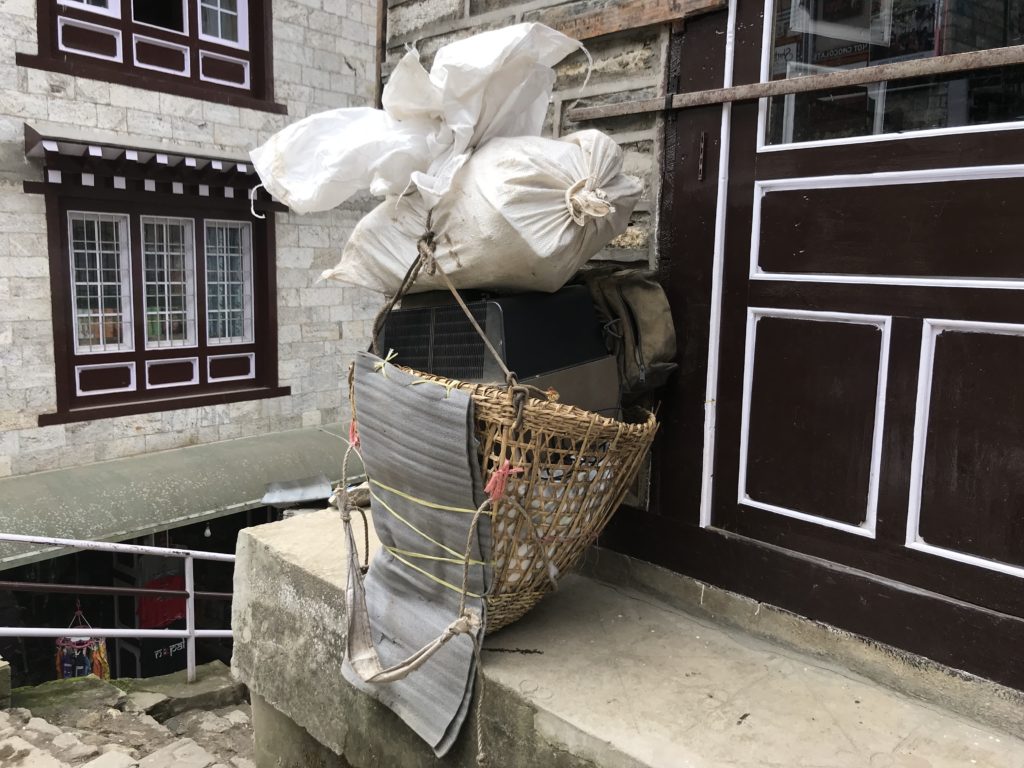
Weekly garbage collection, in Nmache 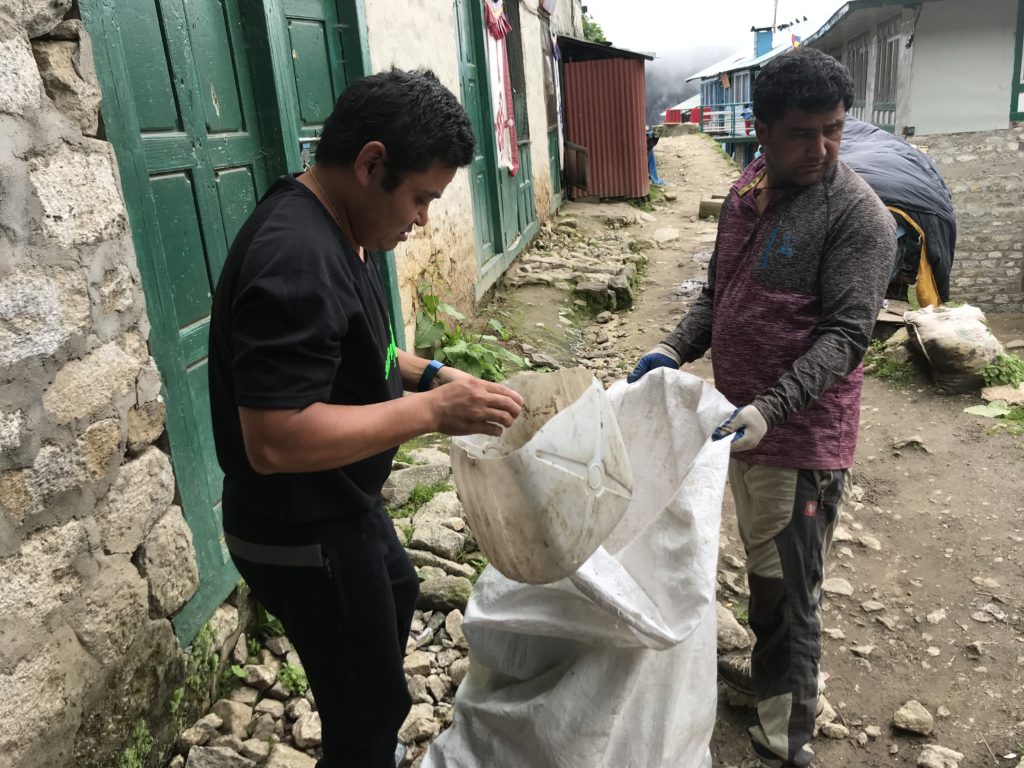
Door to door garbage collection, in Namche
The Sagarmatha Pollution Control Committee (SPCC)
At the end of the 80s of the last century, there was concern about the problem of waste in these valleys, and it was from this concern that local people created a local NGO, with the aim of managing waste and keep the Khumbu clean. Was the SPCC (www.spcc.org.np).
Among the work they have done in these 28 years, I want to highlight the containers located on the main trails, the local management groups and the creation of garbage dumps in each village. It may seem nothing, but we have to take in account about where we are talking and under what conditions they should work. The construction of stone-made bins is practically finished on the most popular trekking trails. Most of these bins, which have been replacing some of the metallic oldest ones, are located in the small resting areas that are on the main trails, and allow the waste separation into glass and cans, and plastic and paper. Last week, going up and down in a valley, I had the opportunity to meet one of the teams that build them and see how, when we got off, they had already finished one which, when we went up, was at the beginning. In 3 days, they built one!
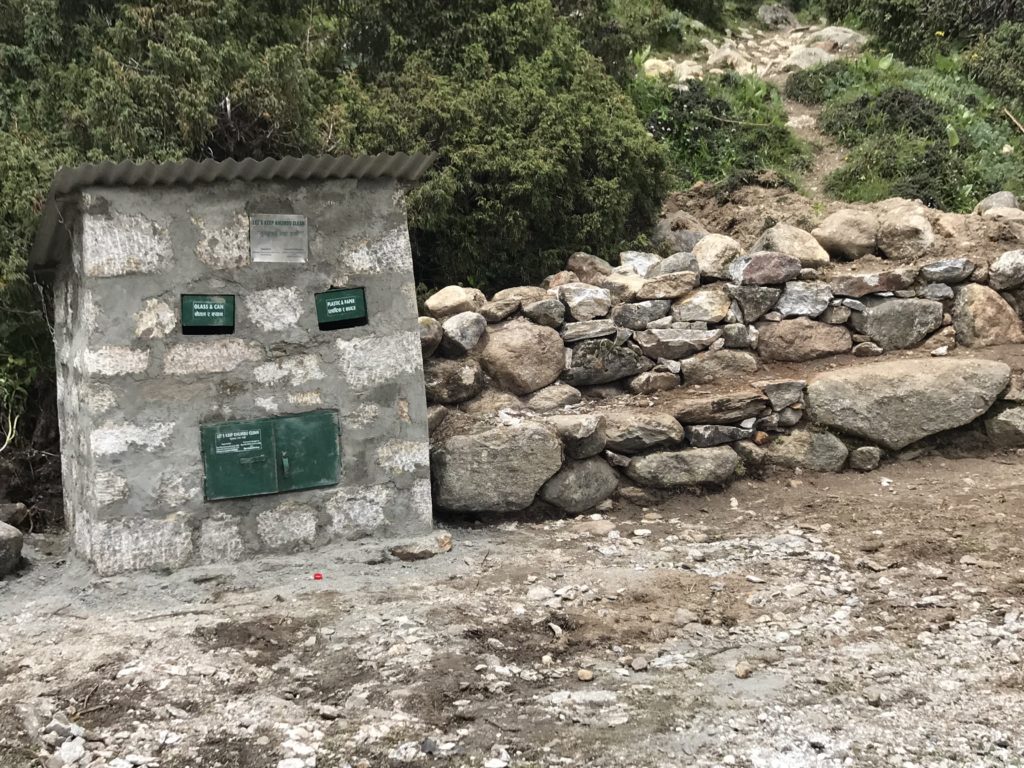
Garbage bin just built 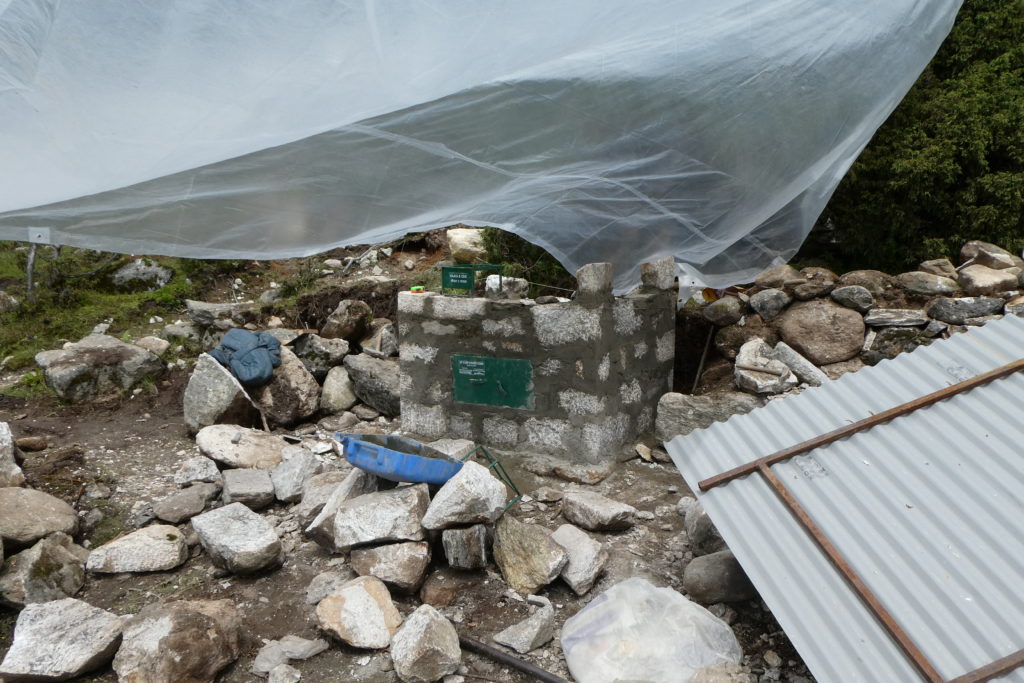
The same bin, 3 days earlier
For the management and collection of rubbish, in all these years they have created 23 management groups with a very important role of the Groups of Women and Youth Clubs, very active in the villages of these valleys. The collection is done, as it could not be otherwise, on foot, collecting the garbage door to door and carrying them to the landfills.
Of landfills, I have also seen in all the villages and even the small settlements where someone lives there all year round. One of these places, Lungden, where only three families live year-round and located at 4,350 meters, have their dump.
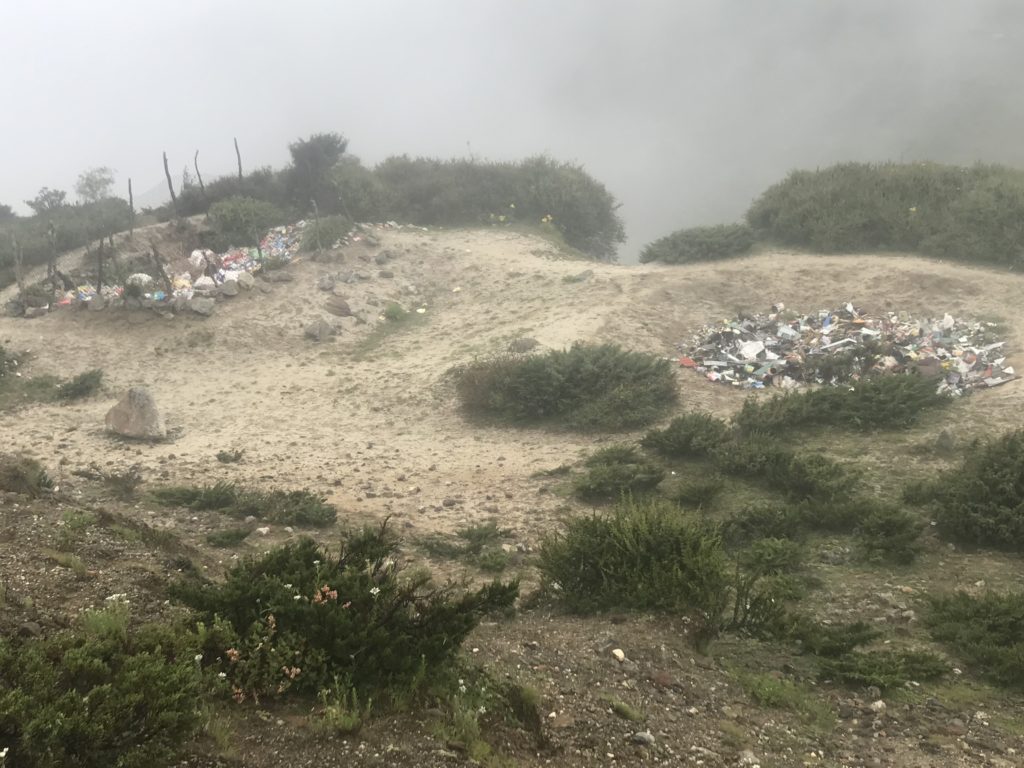
Thame landfill (3,800 m) 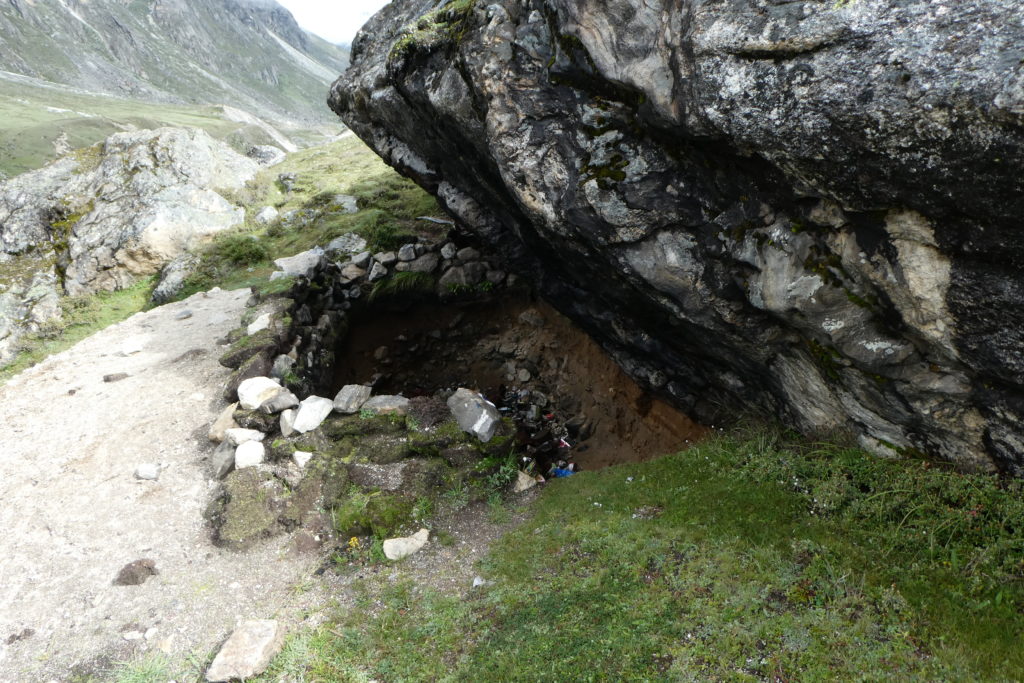
Lungden landfill (4,400 m)
The Sagarmatha Next
Sagarmatha Next (www.sagarmathanext.com) is a very innovative environmental project that wants to be the driver of sustainable tourism in the Sagarmatha National Park. For so it brings together, in a single project, Education, Art and Entertainment related to the environment and waste, as well as the management of the waste itself. This project is fully funded by a social investor and is developed in collaboration with the SPCC and other organizations committed to the sustainability of tourism in these valleys. It is a daring bet, that not everyone understands here, but I am convinced that finally they will gain the recognition of local people.
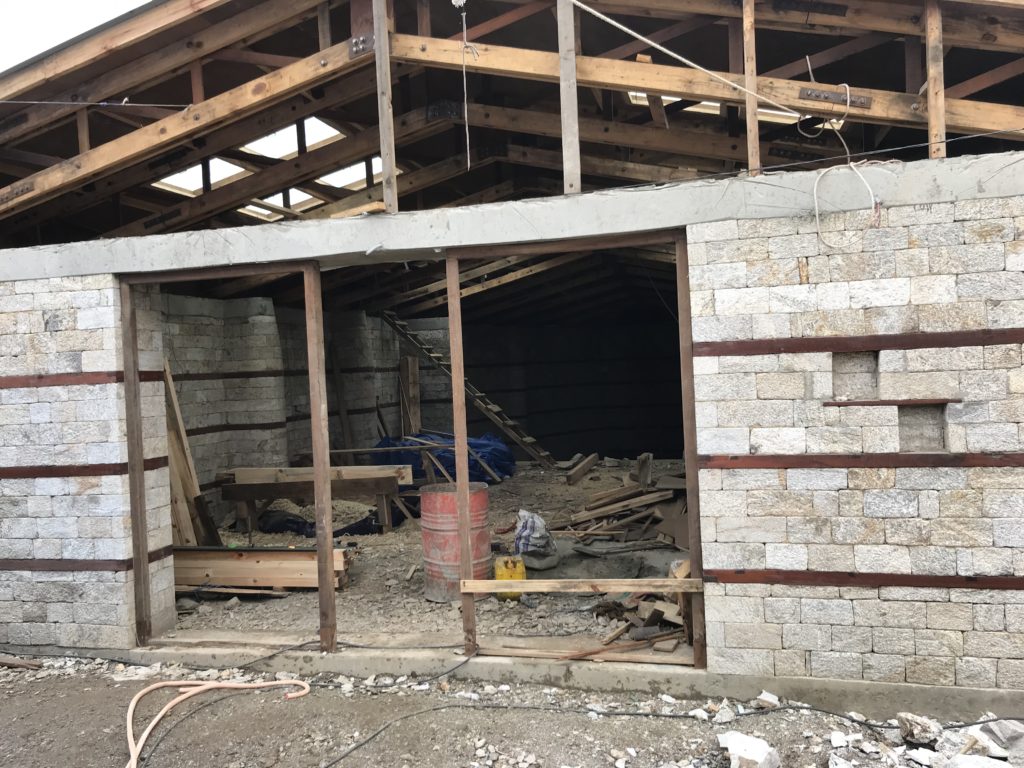
Outside view of the visitors centre 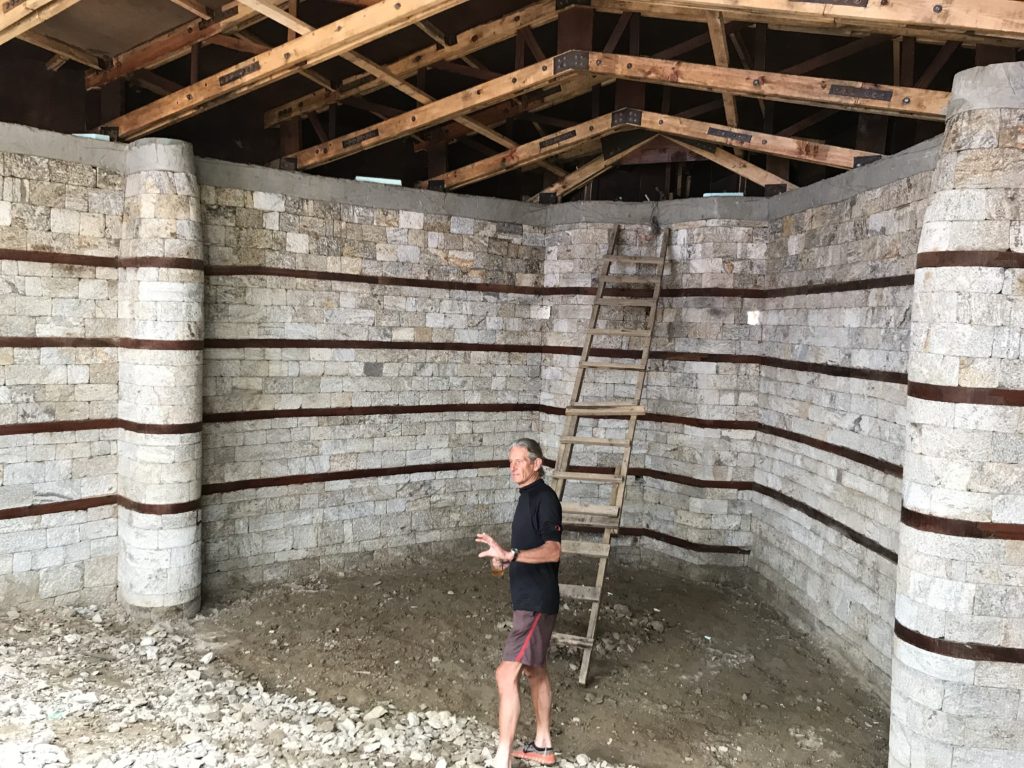
Inside of the visitors centre
The project includes the construction of 4 buildings, with a total of about 700 m2, located at 300 meters above Namche. They are buildings with a very special design and built following the traditional way of local building, based on stone and wood, incorporating, but also, special techniques to make them resistant to earthquakes, very common here.
As you can guess, the conditions with which they work on this site, meteorology, altitude or supply of materials, make this site unique.
The main building will be a well-equipped interpretation centre.
The second building will be an exhibition hall for resident artists or guests, and a cafeteria.
A third one will be the workshop for resident artists, and the creations will have to be from waste.
The fourth building will be a small store where artists’ works will be sold.
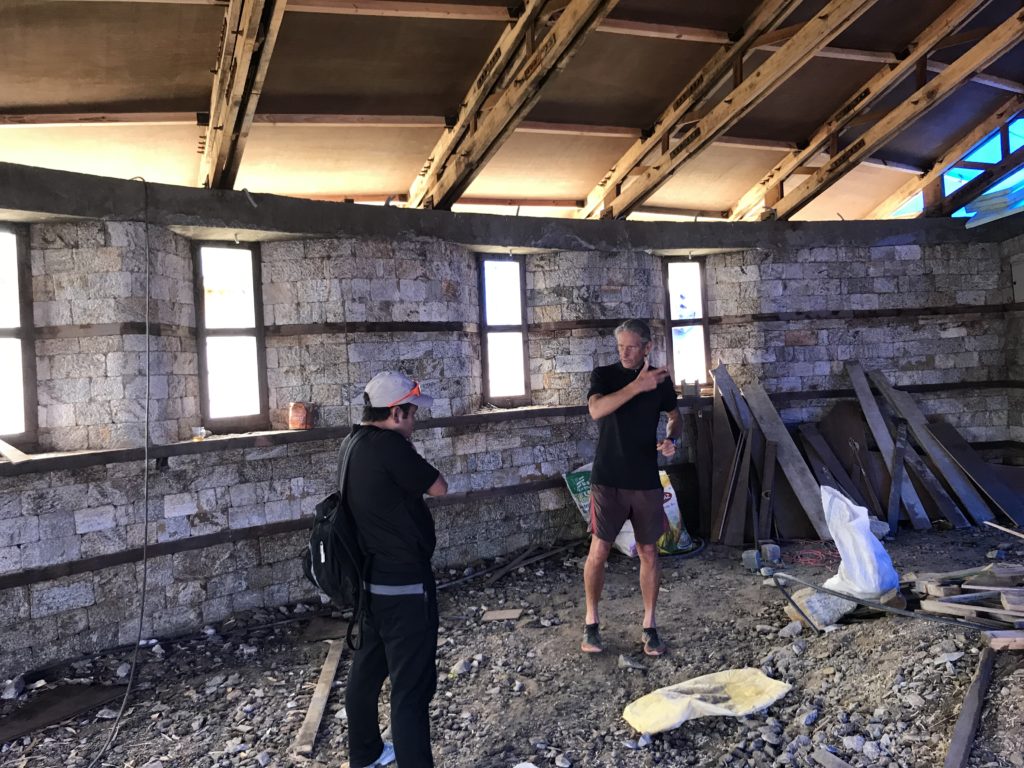
The future artists workshop 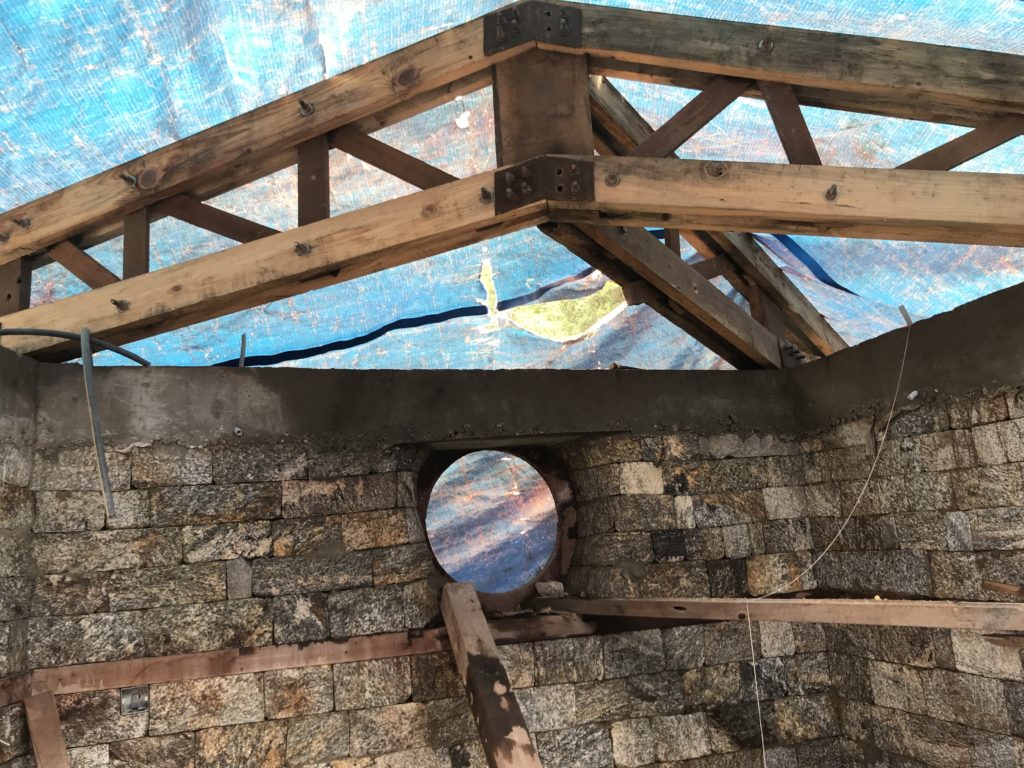
The future shop
They plan to open to the public next October, which will also be used to carry out a pilot test of a project I found to be great. That’s what they call the “Carry Me Back” project.
Here they will make a waste selection and everything metallic or plastic will be compacted in small packages of 1kilo, then climbers, trekkers and visitors will be kindly asked to take these bags down to Kathmandu.
And what may it represent? Well, if people’s response is positive, as expected, with the number of people visiting these valleys, more than 50 tonnes of waste might be carried to Kathmandu every year, at no cost.
Later on, I will explain how the whole set of buildings is finished, how the pilot test works and how artistic activity is carried out in such a special place.